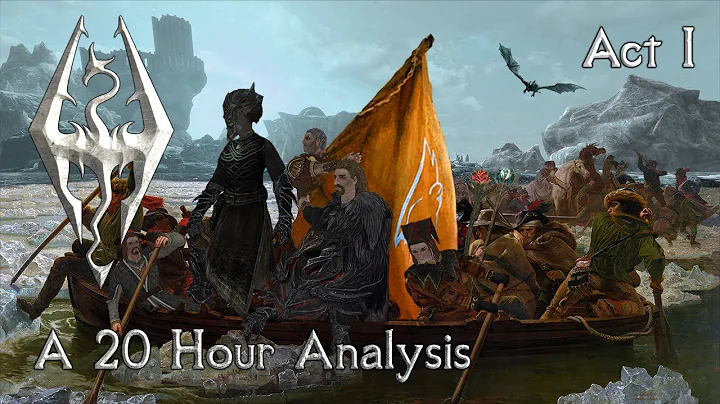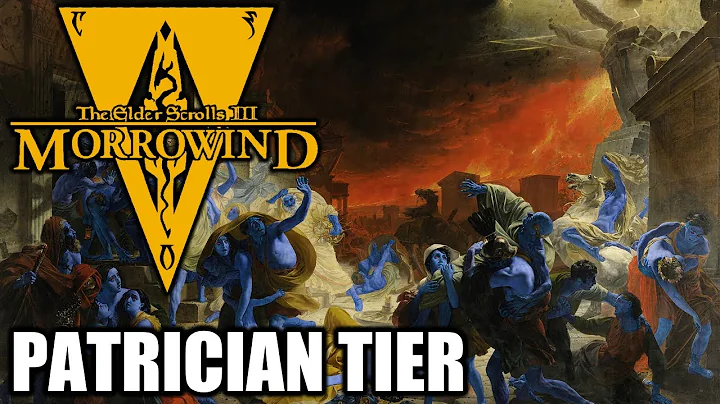
When the pressures of modern life get too much - and let's be honest, they do a lot of the time - we wonder what other periods in history were more interesting. What was the old west like? Yes, the simplicity of frontier life, having a horse as a constant companion, sleeping under the stars, cooking over a campfire, sneaking into town to replenish supplies, maybe opening a grocery store or a tavern... sounds good, yes. Bar?
It's just that, as we know from the movies, there's a lot more bloodshed and general nastiness happening in the West. This is where things get tricky. The Smithsonian Institution said many of these came from Theodore Roosevelt, who called the bloodshed that accompanied westward expansion "a healthy sign of the masculinity of the American people." Ah.
Interestingly, they also point out that this attitude is both the starting point for the story of the lawless West and the point at which it has been rewritten in recent history. Life in the West was far more nuanced; even life in Dodge City—famously one of the most lawless towns—was based largely on early gun violence and a series of myths. That's not to say it's not dangerous: yes, it's just that all the reasons you're unlikely to survive aren't necessarily what the movies tell you.

You might die before reaching the West
To survive in the American West, they had to get there first - and the likelihood of dying along the way was high. The Encyclopedia Britannica estimates that between the 1840s and 1860s alone, 300,000 to 400,000 people migrated west along the Oregon Trail.
The National Park Service says one in 10 of them died before reaching the Promised Land. The number of ways people die is staggering, with some of the most common causes being illness, accidents, weather-related tragedies, drowning while crossing the trail's many rivers, and of course gunshot wounds.
These are just the big risks, there are other risks. The bite of a rattlesnake could be fatal, and at that time bison were still everywhere. A stampeding herd of cattle could quickly and easily overwhelm a wagon train, and they did. Accompanying animals are also dangerous: most people have their own herds of cattle, horses, and mules, and riding accidents are not the only risk. People were kicked to death in the stampede, the most tragic of which were probably those who fell from their carriages and were either crushed by wheels or other carriages, or dragged along. Welcome to the West!

Disease is Rampant
When Dr. Jim Kornberg puts the spotlight on the "Old West's Fastest Killer" for True West Magazine, he's not talking about a bullet—it's Cholera . After all, a bullet can only kill a very limited number of people, but cholera is a gift that keeps on giving. Only in 1873, a massive cholera epidemic swept across the West, and at this point in history, the medical community fully understood how it spread. The discharged body fluids were called "cholera toxins," and in Dr. John M. Woodworth's 1,144-page report to Congress, he concluded that it was feasible to disinfect everything that could be disinfected.
Unfortunately, disinfectant is hard to come by in the West and people keep dying. This is just one of those diseases. The National Park Service says measles, scurvy, dysentery, pneumonia and smallpox are also common.
According to "History" records, smallpox came to the Americas together with the Spanish . Once there, smallpox and other European diseases claimed the lives of 90% of the indigenous people in North and South America. These people were pushed to horrific extremes, as historian David Darley recounts. He discovered a newspaper report from 1878 that an Apache doctor, after diagnosing two infants with smallpox, "placed them back to back and killed them with a single bullet."

The cure may be worse than the disease Worse
Historian David Darley has written "Frontier Medicine," a disturbing exploration of what being a doctor in the Old West meant for both doctors and patients. The New York Times said that this is a terrible thing. He found that doctors are largely making things up and prescribing treatments that cause more damage than the disease or injury. Sadly, white people Doctors scoffed at a treasure trove of information that could have provided real benefit: the medical knowledge of Native American tribes.
For someone who is sick or injured, there are essentially three options, including waiting for a doctor (if one can be found), treating one's problem, or simply giving up. If a doctor shows up, he might bleed (apparently, swallowing leeches is a common problem), or administer a strange medicine like one that was used to treat arthritis and gout in 1815. This involved killing a dog, stuffing its body with things like turpentine , sulfur and nettles , and then roasting it over an open fire. Inhale the smoke and you will be cured! (or not).
It’s no wonder that many people turn to self-medication for chronic illnesses. Dr. Holliday was one of them: Forest Tennant, M.D., said that when he came down with tuberculosis, he treated himself with opium and alcohol, and although he lived longer than expected, he also coughed it up frequently. Lung block.

There are a lot of murders
Watch any Hollywood Western and you'll quickly notice that there are corpses everywhere, nothing is sacred, and no one is safe. But is this statement accurate? Terry Anderson, professor emeritus of economics at Montana State University, says it is not. Despite the popular perception of the West as a place where everyone settled their disputes with bullets, usually things were far more civilized.
But they are not entirely peaceful either. The Ohio State University Criminal Justice Research Center took an in-depth look at homicide rates in the Old West and found something surprising. Let's take Dodge City during its boom years. Between 1876 and 1885, the odds of a resident dying violently was 1 in 61. Their murder rate is about 165 deaths per 100,000 people, which doesn't sound like a lot, but let's put it into perspective. The U.S. Centers for Disease Control and Prevention said the homicide rate in 2020 was about 7.8 per 100,000 people — a huge jump compared to previous years.
In Ohio , the probability of being murdered in Dodge City was higher, and even the lower probability was higher than today's numbers. They say Oregon has the lowest homicide rate, about 30 per 100,000 people, and the bottom line? Being murdered is a very real and ongoing fear.

Indians The death toll was staggering
To discuss the possibility of death in the Old West, one must discuss the people who died the most. Of course, these were Native Americans who had been living on this land for generations, long before the Spanish landed, and they were saying, "This looks great, we want it." Data is hard to come by, but according to Historical records indicate that when Christopher Columbus sailed to North America, there were an estimated 5 million to 15 million people living in North America. By the end of the 19th century, fewer than 238,000 people remained. What happened to
is very complex and difficult to summarize, but there are some main reasons for all of these deaths. Smallpox was particularly destructive, and history shows it caused huge numbers of deaths. A series of wars—including the Battle of Tippecanoe, the War of 1812, and the Seminole Wars—further reduced the population, as did outright massacres such as the Sand Creek Massacre.
Then, there are forced relocations like the Trail of Tears. In the 1830s, thousands of Indians lost their lives and were forced from their ancestral homes and forced to walk more than a thousand miles to where the U.S. government decided they could live. Native Americans who survived the Old West were the exception, not the norm.

Racism and xenophobia led to decent deaths in China
The Library of Congress stated that the gold rush brought a large number of immigrants from China. In 1852, 20,000 Chinese immigrated to , California, , and some serious conflicts ensued, made worse by the fact that the violence was government-sanctioned.Under a piece of legislation called the Foreign Miners Licensing Act, Chinese miners were forced to pay $20 a month, and if that doesn’t sound like a lot, let’s add to that, that’s the equivalent of $675 today, all to get They were allowed to work.
"National Geographic " magazine stated that from the moment they entered the United States, Chinese immigrants suffered various abuses and attacks, such as the fatal incident on October 24, 1871. It was one of the largest mass lynchings in American history, and it targeted Los Angeles' Chinese population. This was a relatively small part of the 19th-century hatred against Chinese immigrants, an environment of violent impunity considering that Chinese, Native Americans, and blacks were all barred from testifying in court against the white majority.
Formally organized groups that exist solely to spearhead attacks, arson, murder, and lynching include the Ku Klux Klan and the Central Pacific Anti-C***** Association. Life in the Old West was fatal to anyone, and death was everywhere for any Chinese.

What’s in a Cocktail Could Kill You
It’s no secret that some days you can only survive with a cocktail at the end, but in the Old West, even those cocktails could be deadly.
While most Westerns might show cowboys and outlaws siding up to a bar and ordering whiskey from the town's tavern, the Tahoe Daily Tribune found that, in addition to locally brewed beer and regular old whiskey, the tavern Drinks such as potentially deadly tarantula juice are more likely to be served. Drinking the drink "often leads to violence" because it contains the deadly, hallucinogenic strychnine, they said. The drink got its chill-inducing name because those who drank it frequently complained of being covered in crawling spiders.
The CDC says that small amounts of strychnine can cause poisoning and death, so that's interesting. It's not the only problematic substance in alcohol, either. In many bars, it's all about maximizing the number of drinks available to boost profits. "American Legend" said this means that many bars reduce the supply of alcohol and provide customers with a potentially deadly concoction of spirits containing gunpowder , turpentine and even ammonia. Drink up!

Excessive drinking killed many people
The dangers of drinking too much in the Old West were not just what they drank, but how much they drank - first, according to reports, seeing a It is not uncommon for teenagers to drink with adults in pubs. In fact, before many of the men turned 16, they were in a state that today would be classified as severe alcoholism, says Marshall Trimble, Arizona's official historian.
is not just an age issue, but also a quantity issue. Looking at the history of alcohol use in the United States, historian W.J. Rohrabaugh said that starting in the 17th century, people of all ages—including toddlers, who would often take the last sips of their parents' drinks—were Start the day with a breakfast drink and end it with a nightcap .
Alcohol use reached its peak in the 19th century, thanks in large part to the large corn crops and the profitability of converting corn into whiskey. Basically, everyone was drinking, and by 1830 the amount of alcohol consumed was astronomical. Let's put it this way: If people today started drinking like people in the 1830s (please don't), they would drink 3.5 bottles of whiskey a week. Research in the book Alcohol and Opium in the Old West shows that drinking was viewed as a perfectly acceptable pastime—so much so that abuse and addiction eventually led to the temperance movement and Prohibition .

Mining is extremely dangerous
Starting with the 1849 California Gold Rush , mining operations began to take off in the West. Philadelphia ’s Independence Hall Association says it is finding more and more of the precious metals , with miners looking not only for gold but also for fortunes in silver, copper, lead and zinc - all of which are rapidly growing in the country key component of industry.
Pierce Mullen, professor emeritus of history at Montana State University, said it quickly became clear how many ways there were to die in mining. From mine collapses and explosions to falling from ladders hundreds of feet high, fatigue and hygiene are major causes of danger. Miners often live in crowded communities that are breeding grounds for disease, and the water they drink is contaminated not only by unsanitary living conditions but also by runoff from the mines.
True West magazine said it was not until the early 20th century that the medical community began to understand why so many miners died from lung-related diseases such as tuberculosis. The disease begins with silicosis due to inhalation of silica-containing dust. If this doesn't lead to sudden and premature death, then there's a good chance that something else - like carbon monoxide poisoning, losing a few fingers or limbs, infection or exposure to mercury and arsenic - will.

A cemetery shows the various deaths that occurred
In 1998, archaeologists excavated a cemetery in the old western town of Qihe. They sat outside what is now Carlsbad, New Mexico, hoping the remains of those buried there would drive home how difficult life and death can be.
Of course they did. According to the Los Angeles Times, a total of 52 bodies were exhumed, including 15 men aged between 18 and 45. Ten of them suffered violent fates - and some of them weren't your typical Wild Western movie deaths. For example, William Johnson was killed by a shotgun blast to the face. What about his murderer and his purpose? His father-in-law was saddened to learn that his son-in-law had fought for the North in the Civil War... A tavern worker was shot to death, another had a bullet hole in his skull, and yet another man's death began with the amputation of his leg.
What about the other corpses? There was a family who died of dysentery upon entering the city, and a group of children under the age of two. Most of these 14 children died from diseases that modern medicine has largely cured—like measles and scarlet fever—which means death doesn’t care who you are, how old you are, how young you are, or how idealistic you are ism...it will all come.





















